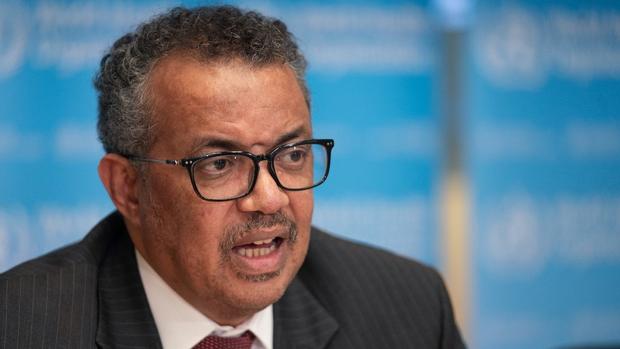Coronavirus found most infectious at point when the infected person first begins to feel unwell
 This shows World Health Organization Director-General Tedros Adhanom Ghebreyesus speaking at the WHO headquaters in Geneva on March 16, 2020. (PHOTO / AFP)
This shows World Health Organization Director-General Tedros Adhanom Ghebreyesus speaking at the WHO headquaters in Geneva on March 16, 2020. (PHOTO / AFP)
World Health Organization Director-General Tedros Adhanom Ghebreyesus said more research needs to be done to better understand the extent to which COVID-19 is being spread by people who do not show symptoms.
“Since early February, we have said that asymptomatic people can transmit COVID-19, but that we need more research to establish the extent of asymptomatic transmission,” the WHO chief said at a virtual press conference from Geneva on June 10.
“That research is ongoing, and we’re seeing more and more research being done,” he added.
Saying that the world has been achieving a lot in knowing the new virus, the WHO chief told reporters that “there’s still a lot we don’t know”.
Tedros stressed that the most critical way to stop transmission is to find, isolate and test people with symptoms, and trace and quarantine their contacts.
Maria Van Kerkhove, technical lead of the WHO’s Health Emergencies Program, made headlines on June 8 after she said at a media conference that “it still seems to be rare that an asymptomatic person actually transmits onward to a secondary individual”.
But at a live social media Q&A event on June 9, she clarified that “this is a major unknown”.
“We do know that some people who are asymptomatic, or some people who don’t have symptoms, can transmit the virus on,” she said.
Van Kerkhove also noted that studies show people with the coronavirus are most infectious just at the point when they first begin to feel unwell.
This feature has made it so hard to control spread of the virus that causes COVID-19 disease, but it can be done through rigorous testing and social distancing.
“It appears from very limited information we have right now that people have more virus in their body at or around the time that they develop symptoms, so very early on,” she said.
Preliminary studies from Germany and the United States suggest that people with mild symptoms can be infectious for up to eight to nine days, and “it can be a lot longer for people who are more severely ill”, she said.
Michael Ryan, executive director of WHO Health Emergencies Program, said on June 10 that the COVID-19 pandemic is still evolving.
“If we look at the numbers ... this pandemic is still evolving. It is growing in many parts of the world,” he said. “We have deep concerns that health systems of some countries are struggling, under a huge strain and require our support, our help and our solidarity.”
“As we look at COVID-19, we have an infectious pathogen that is present in the upper airway for which the viral loads are peaking at the time you are just beginning to get sick,” he said. “That means you could be in the restaurant feeling perfectly well and start to get a fever, you are feeling OK, you didn’t think to stay home, but that’s the moment at which your viral load could be actually quite high,” he said.
Ryan added: “And it’s because the disease can spread at that moment that the disease is so contagious, that’s why it spread around the world in such an uncontained way, is because it’s hard to stop this virus.”
He said “each and every country has a different combination of risks and opportunities, and it’s really down to national authorities to carefully consider where they are in the pandemic”.
But some countries have shown that transmission can be brought down to “an acceptable level or even to no level”, as New Zealand had recently demonstrated, he said.
In Europe, the risk issues now are about travel and the opening of the schools, around risk management, mass gathering, surveillance and contact tracing, said Ryan.
In Southeast Asian countries, where to a great extent transmissions have been under control, governments are more concerned about the re-emergence of clusters, while in South America, the issue of personal protective equipment for health workers has not gone away.
As regards Africa, Ryan said the death rates have been very low in the past week, but the health system can be overwhelmed, as it would have to cope with other diseases such as malaria.
Xinhua contributed to the report.


